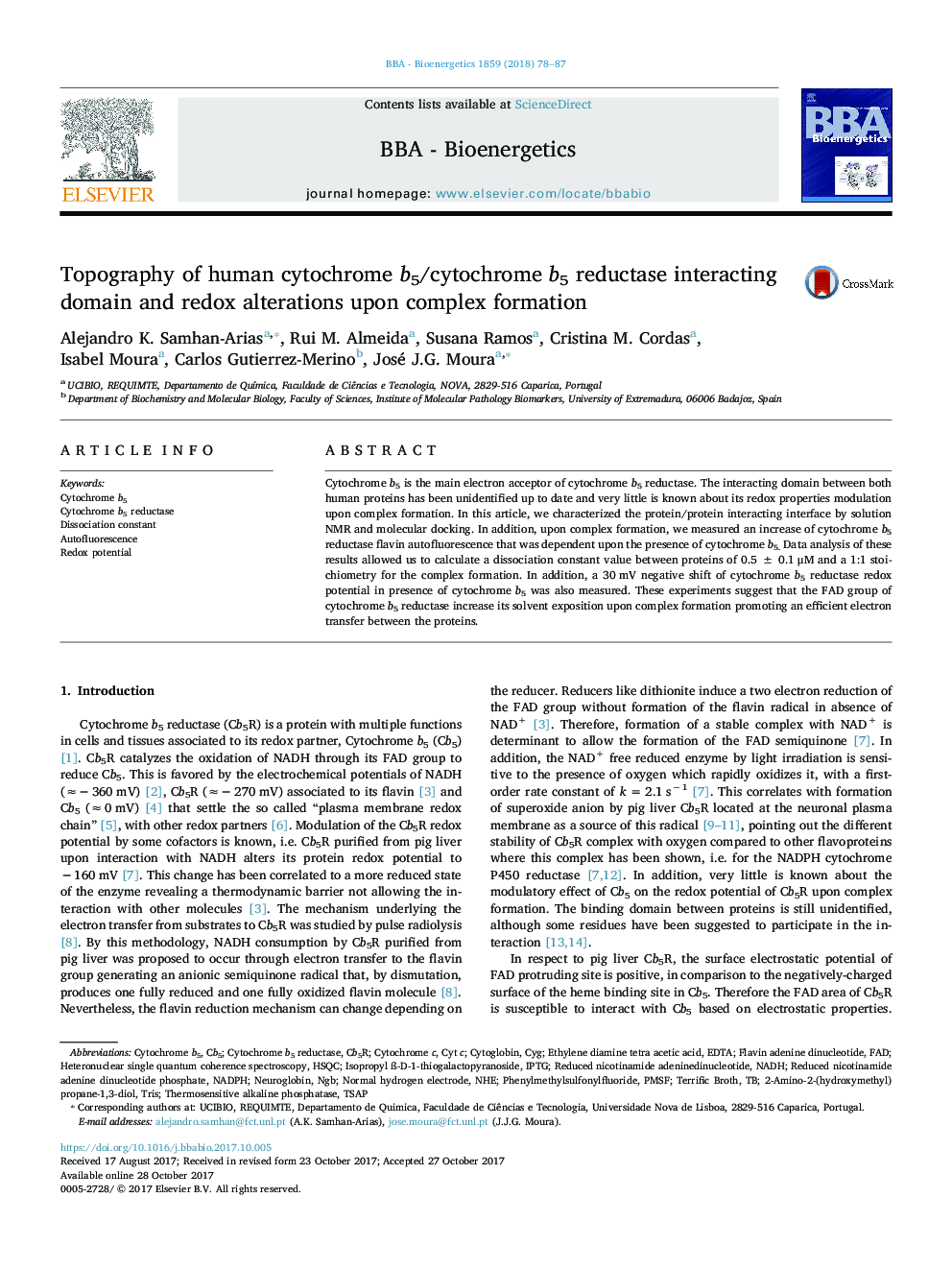| Article ID | Journal | Published Year | Pages | File Type |
|---|---|---|---|---|
| 8298659 | Biochimica et Biophysica Acta (BBA) - Bioenergetics | 2018 | 10 Pages |
Abstract
Cytochrome b5 is the main electron acceptor of cytochrome b5 reductase. The interacting domain between both human proteins has been unidentified up to date and very little is known about its redox properties modulation upon complex formation. In this article, we characterized the protein/protein interacting interface by solution NMR and molecular docking. In addition, upon complex formation, we measured an increase of cytochrome b5 reductase flavin autofluorescence that was dependent upon the presence of cytochrome b5. Data analysis of these results allowed us to calculate a dissociation constant value between proteins of 0.5 ± 0.1 μM and a 1:1 stoichiometry for the complex formation. In addition, a 30 mV negative shift of cytochrome b5 reductase redox potential in presence of cytochrome b5 was also measured. These experiments suggest that the FAD group of cytochrome b5 reductase increase its solvent exposition upon complex formation promoting an efficient electron transfer between the proteins.
Keywords
TSAPflavin adenine dinucleotideIPTGNADPHCb5HSQCPMSFCyt CNgbTRISNHE2-amino-2-(hydroxymethyl)propane-1,3-diolEDTAEthylene diamine tetra acetic acidnormal hydrogen electrodeFADDissociation constantterrific brothcytochrome b5Cytochrome b5 reductasecytochrome ccytoglobinHeteronuclear single quantum coherence spectroscopyAutofluorescencePhenylmethylsulfonylfluorideNADHNeuroglobinRedox potentialreduced nicotinamide adenine dinucleotide phosphate
Related Topics
Life Sciences
Agricultural and Biological Sciences
Plant Science
Authors
Alejandro K. Samhan-Arias, Rui M. Almeida, Susana Ramos, Cristina M. Cordas, Isabel Moura, Carlos Gutierrez-Merino, José J.G. Moura,
